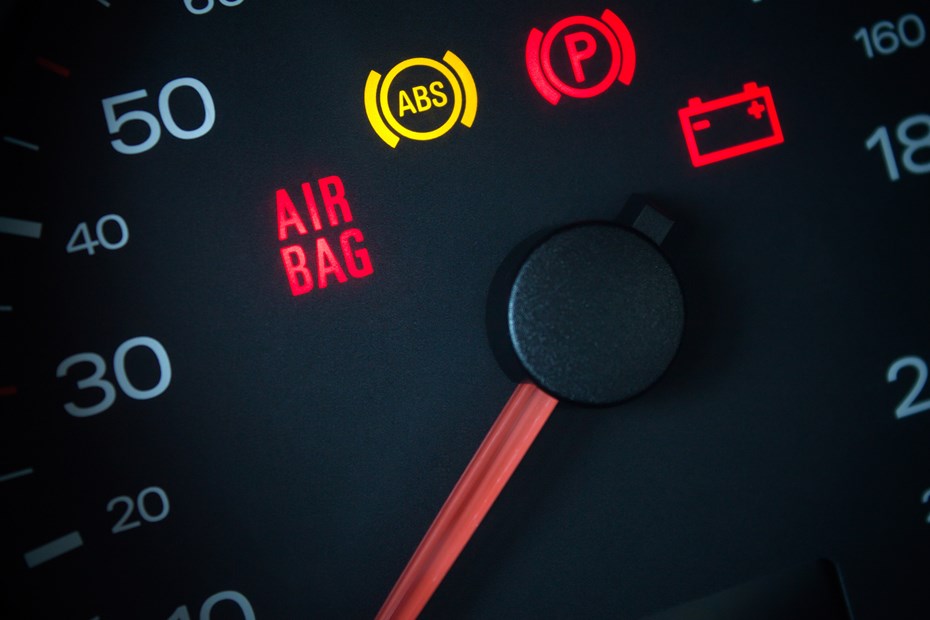Car manufacturers pack an enormous amount of technology into modern vehicles, but just as the symbols on road signs have remained mostly unchanged for decades, simple dashboard warning lights remain the best way of alerting a driver when there might be something wrong with their car.
Hopefully, you won’t have to see these lights very often, particularly given the reliability of modern cars, but this does mean they can be a little confusing if you’re not familiar with what each warning light is indicating. With so many functions in modern cars, many lights serve more than one purpose – making roadside diagnosis even more confusing and complicated.
You’ll want to heed their warnings though, as some can indicate quite serious issues. Below, we’ve compiled a list of the most common dashboard warning lights and provided a brief overview of what each means. We also give an indication of the likely severity of the issue flagged by the warning light and outline the steps you need to take to fix the problem that illuminated the light. Spoiler alert – this normally means taking your car to a mechanic.
Engine management warning light
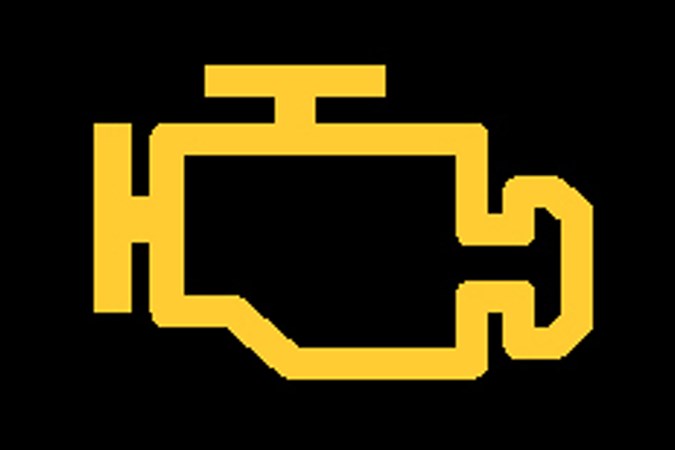
The engine management warning light is probably the most common warning you’ll see on your dashboard – and it’s every motorist’s nightmare. On its own, the lamp isn’t much help as it doesn’t tell you what’s wrong with the car. To narrow down the problem, you’ll need to take your motor to a mechanic with the correct diagnostics tool.
A diagnostics tool is a small computer that can read the computer that runs your car by connecting to a socket under the dashboard (called an OBD port). If there’s a fault, the reader will show a code, or in some cases even a line of text detailing the issue, allowing a mechanic to home in on the faulty part.
An engine management light doesn’t automatically spell disaster however, in part thanks to the sheer number of things, many of which are pretty minor, which can trigger it. In some cases a sensor might just be unhappy, though it’s still wise to have the car checked as certain issues might begin to cause poor running, while others may indicate more serious problems with mechanical components.
Generally, if the engine management light is solid the problem is minor and you can continue driving – but we recommend getting your vehicle checked as soon as possible. If the engine management light is flashing or red, pull over to the side of the road quickly. It could be indicating serious (and very expensive) problems with your vehicle.
Some classic cars feature a similar warning light, but it isn’t connected to any sort of diagnostics system that can tell a mechanic what’s wrong with the car. Instead, this light is designed to warn you of an imminent and very serious problem, such as low oil pressure, overheating or charging system problems.
Battery warning light
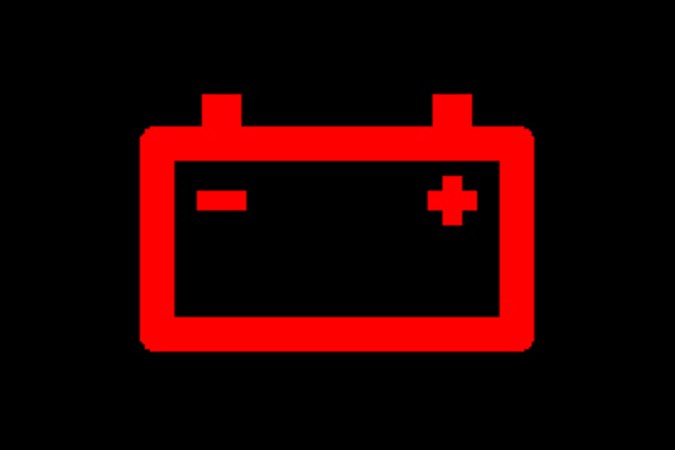
This one’s a little simpler than an engine management light. If the battery warning light comes on, it means your battery isn’t charging. A failed alternator is a common culprit, but it could be something more trivial such as a snapped alternator belt or a break in the wiring that runs your car’s charging system.
You won’t be able to run your car for long if the alternator isn’t working, so if the warning light illuminates for any length of time, find somewhere safe to stop and switch the vehicle off – driving further may damage the battery, but running out of charge while you’re at speed on a main road or motorway could cause even bigger problems.
Thankfully, alternator and battery issues tend to be relatively simple and affordable to fix. Prices for a fresh car battery range between £50 and £150 depending on your car’s make and model, while alternators tend to be under £100, and an alternator belt £10-20, plus a labour charge to do the work. If you need a new battery, read our handy guide to find the best on the market.
Oil pressure warning light
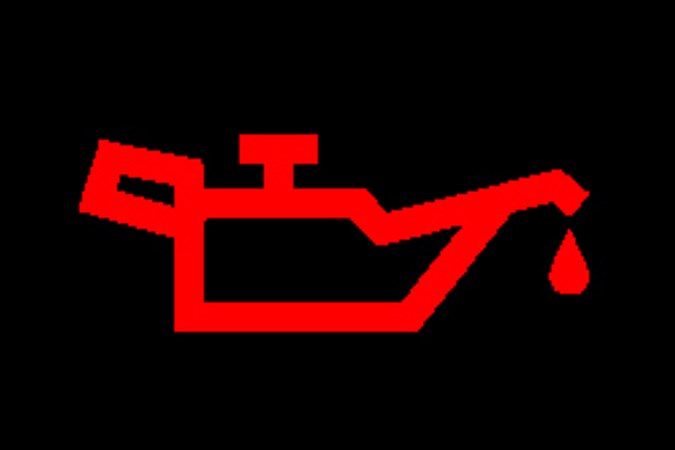
The symbol for the oil pressure warning light is a little archaic, depicting an old oil can of the kind you’d use to lubricate parts of a vehicle that you’d struggle to even access today! However, it’s an important warning light because it indicates low oil pressure – and ignoring it could result in permanent damage to your engine.
All being well, it may simply be indicating that the engine’s oil level is a little low. You can check this using the dipstick under the bonnet (the handle is usually yellow to make it easy to spot), and if the level isn’t between the marks on the stick, you’ll need to find out the correct oil for your car (it’s usually shown on a sticker somewhere in the engine bay) and top it up.
If the oil level already looks normal then it may be bad news, as the light could be indicating low pressure due to an oil pump fault, or blocked oil passages in your engine preventing components from being lubricated. Do not drive your car, and have it checked out by a mechanic as soon as possible.
Brake warning light
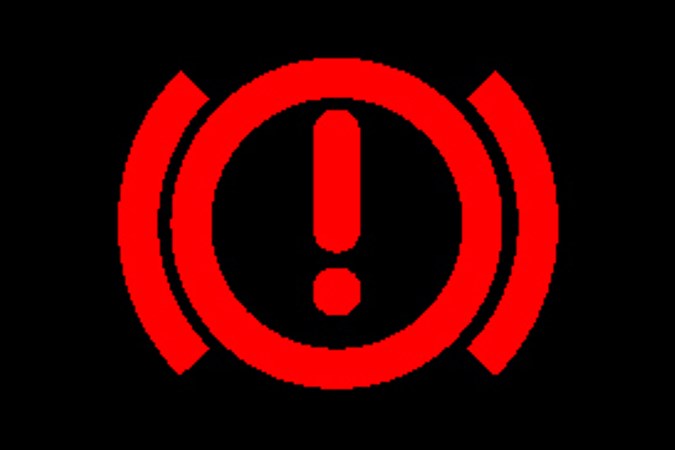
You’re likely to see this symbol more than some of the others here, because it’s illuminated whenever your handbrake (or electronic parking brake in many modern vehicles) is applied. That familiarity doesn’t mean you should ignore it when it’s illuminated however, as it could indicate a problem with the braking system.
If the light is on when you’re driving, you should first ensure you’ve fully released the handbrake. If the handbrake isn’t engaged, check if your brake pedal feels softer or lighter than usual, with a ‘spongy’ feel. If so, it could mean there’s a split in the hydraulic lines that connects your brake pedal to the brake calipers – which could reduce the effectiveness of your brakes, or even lead to a failure.
If the brakes feel normal and you still have good braking power available, then the light may instead be caused by a sensor indicating low fluid levels in the brake reservoir (you can check this under the bonnet – your brake fluid reservoir will typically be a small plastic bottle at the back of the engine bay, usually on the driver’s side, and it has markings to indicate the correct level). Alternatively, the light could be warning you that the brake pads need replacing, or there’s a sensor fault. Either way, you should take the car to a mechanic as soon as possible to have the car fixed.
Anti-lock braking system warning light
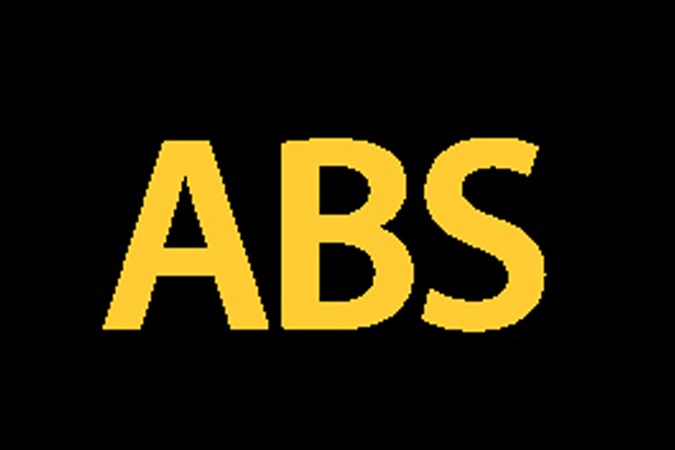
The regular brake warning light isn’t the only one you might see on modern vehicles – there’s also a light for anti-lock braking system, or ABS faults. While your brakes should still function, you should assume that your brakes could now lock under very heavy braking or when the roads are slippery. Drive with caution, and avoid sudden heavy braking which could cause the wheels to lock and a potential loss of control.
It’ll probably just be a failed sensor, but it’s worth taking the car to a mechanic and having the problem remedied. You should be more concerned if the brake warning light and ABS warning light are both illuminated, as this indicates a serious problem with your braking system. If you’re on the road, slow down gradually and phone for help. Do not drive the car any further.
Diesel particulate filter warning light

Diesel particulate filters, or DPFs, have been mandatory fitment on diesel cars sold in Europe since 2011, and a correctly fitted and functioning DPF has been an MOT requirement in the UK since 2018. These filters trap harmful soot particles in the exhaust system and then periodically burn them off. They’re so effective at capturing pollution, that particulate filters have more recently been fitted to petrol vehicles too.
If the DPF warning light is showing, this doesn’t necessarily indicate a permanent fault. It could be that your car just hasn’t got up to temperature recently, and soot particles are clogging the filter. A longer drive on fast road can be enough to clear it, or at least allow the car to perform a ‘regeneration cycle’ where it deliberately raises temperatures to burn off the soot.
Ignore the problem though and the filter can become so clogged it affects exhaust gas flow, and the engine may enter a restricted performance mode. You may need to take your car to have the DPF cleaned or even replaced, though there are some affordable DIY diesel particulate cleaners on the market which could be worth a try.
Tyre pressure monitoring system
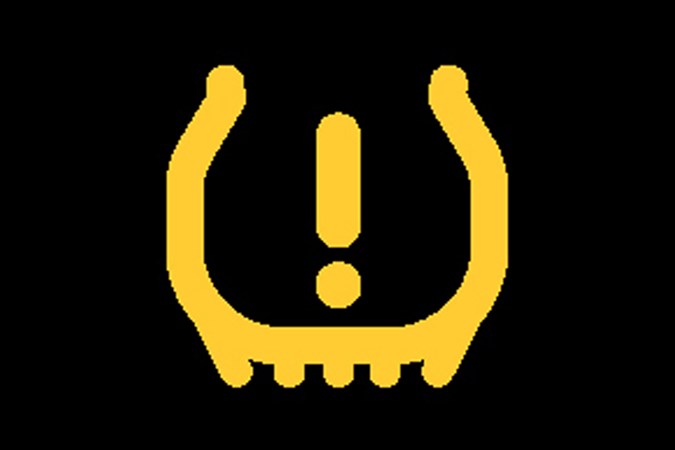
It isn’t always possible to tell when one tyre is inflated less than the others, and some cars even make it difficult to feel when a tyre is almost completely flat. That’s why modern cars have tyre pressure monitoring systems, which can alert you if one of your tyres is underinflated.
These systems aren’t perfect – the previous-generation Ford Focus has a particularly sensitive tyre pressure monitoring system. The light can illuminate even when all of the car’s tyres are inflated to the correct pressure. We recently fell foul of this foible on a drive up north and spent two hours waiting for a recovery van, only to learn that there was nothing wrong with the tyres.
However, if the light pops up on your dashboard, it’s at least worth investigating. Sometimes, it might be that one of your tyres has fallen slightly below the others (some cars may even have a little screen graphic to let you know the exact pressures of each tyre), and you should keep an eye on it.
Most petrol stations will have air pumps which typically only cost a pound or so for five minutes, so you can top each tyre back up to the recommended pressure (most cars have a little graphic, either in one of the door apertures or in the fuel filler door, letting you know the right pressure). If your light is coming on frequently though, it could suggest either a sensor fault, or that one or more of your tyres is losing air, so you’ll need to see a mechanic.
Engine temperature warning light
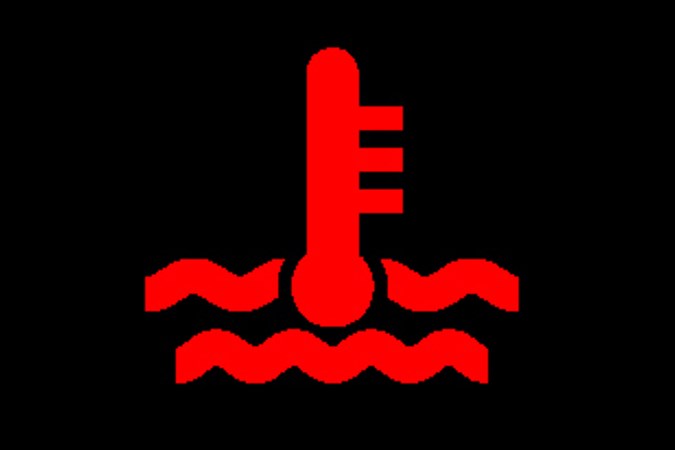
The engine temperature warning light is one you really need to pay attention to, as it could indicate a serious fault with your car. If this light illuminates, then pull over in a safe space as soon as you can, and turn off the engine, as it could be running far too hot and you may cause permanent damage if you keep driving.
There are several things that could be causing your car to run hot, from a radiator or cooling system leak, to something more serious such as a blown head gasket. A tell-tale sign of the latter is white smoke belching from your exhaust. If your car is overheating though, never remove the radiator cap to check the coolant level when the car is still warm. Cooling systems operate under pressure, and you could be sprayed with piping hot liquid.
Airbag warning light

As with the ABS light, you don’t necessarily need to stop immediately if your airbag warning light illuminates (or if it fails to extinguish a few seconds after starting your car), but it’s still worth getting checked out at the earliest opportunity, as you can assume that if the light is on, one or more of your car’s airbags may not deploy in the event of a crash.
The warning light doesn’t necessarily indicate a serious or expensive fault – it could be something as simple as a damaged, faulty, or even accidentally unplugged sensor. But you’ll still need to get the car fixed, not least because an illuminated airbag warning light can result in your car failing its MOT.
Brave enough to tackle repairs yourself? Check out the best socket sets on sale
Read our ultimate guide on car care and keep on top of maintenance at home
Just so you know, we may receive a commission or other compensation from the links on this website - read why you should trust us.


